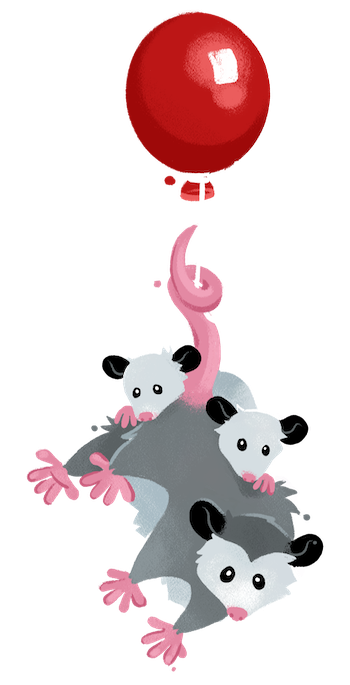Pagination Navigation Jump to heading
How to create a list of links to every paginated page on a pagination template.
Paginating over an Array Jump to heading
Consider the following example paginating our testdata array:
---
pagination:
data: testdata
size: 2
testdata:
- item1
- item2
- item3
- item4
- item5
- item6
---
{# pagination.items has the data for the current page #}The above example would make three different output files from the template.
- Page 1 would have
pagination.itemsset to['item1', 'item2']. - Page 2 would have
pagination.itemsset to['item3', 'item4']. - Page 3 would have
pagination.itemsset to['item5', 'item6'].
But to create a series of links to each of these paginated output templates, we’ll want to use our pagination.pages entries , an array of the pagination.items for each page.
A good way to think about it:
pagination.itemsis the chunk of data for the current page.pagination.pagesis the chunked page data for all of the pages.
Starter Example Jump to heading
To create an accessible navigation structure, we want to do our research first!
- Web Accessibility Tutorials from the w3c Web Accessibility Initiative: Menu Structure
- MDN web docs:
<nav>: The Navigation Section element - Scott O’Hara with an Accessible Breadcrumb Navigation Pattern
- Léonie Watson on Using the aria-current attribute.
Alright, you definitely read all of those right? 😇 Here’s some accessible code you definitely would have written yourself after reading those wonderful resources:
For our example, this code will output the following markup for our example (on the first page):
<nav aria-labelledby="my-pagination">
<h2 id="my-pagination">This is my Pagination</h2>
<ol>
<li><a href="/test/" aria-current="page">Page 1</a></li>
<li><a href="/test/1/">Page 2</a></li>
<li><a href="/test/2/">Page 3</a></li>
</ol>
</nav>id attribute used on your heading (id="my-pagination") is unique to your page!Accessing the Original Paginated Content Jump to heading
Say you want to output something from the paginated data instead of bland Page 1, Page 2, etc. links. For that we need to access the original data!
When Paginating Arrays Jump to heading
testdata:
- item1
- item2
- item3
- item4
- item5
- item6<!-- Don’t copy this code, it’s been simplified for clarity -->
{% for pageEntry in pagination.pages %}
<a href="{{ pagination.hrefs[ loop.index0 ] }}">Page {{ loop.index }}</a>
{% endfor %}- When
sizeis set to 2,pagination.pageswill look like:[['item1', 'item2'], ['item3', 'item4'], ['item5', 'item6']]- Use
pageEntry[0]andpageEntry[1]to access the original content.
- Use
- When
sizeis set to 1,pagination.pageswill be the same as the original data:['item1', 'item2', 'item3', 'item4', 'item5', 'item6']- Use
pageEntryto access the original content.
- Use
When Paginating Object Literals Jump to heading
testdata:
key1: item1
key2: item2
key3: item3
key4: item4
key5: item5
key6: item6<!-- Don’t copy this code, it’s been simplified for clarity -->
{% for pageKey in pagination.pages %}
<a href="{{ pagination.hrefs[ loop.index0 ] }}">Page {{ loop.index }}</a>
{% endfor %}- When
sizeis set to 2,pagination.pageswill look like:[['key1', 'key2'], ['key3', 'key4'], ['key5', 'key6']]- Use
testdata[ pageKey[0] ]andtestdata[ pageKey[1] ]to access the original content.
- Use
- When
sizeis set to 1,pagination.pageswill be the keys of the object:['key1', 'key2', 'key3', 'key4', 'key5', 'key6']- Use
testdata[ pageKey ]to access the original content.
- Use
Visually Style the Current Page Link Jump to heading
You’ll probably also want to add some kind of visual styling to indicate that the user is on the current page. For this let’s use a light background-color.
[aria-current] {
background-color: #eee;
}font-weight here make sure the change in text size for the current page doesn’t make your navigation shift around between pages! This is especially important if your navigation links are displayed side-by-side on the same line.Add Previous and Next Links Jump to heading
Note that if the current page (page.url) is the first or last in the set, we won’t output links.
pagination.href.previousandpagination.href.nextare added in0.10.0. Usepagination.previousPageHreforpagination.nextPageHrefin previous versions.
Add First and Last Links Jump to heading
For clarity here, we’re omitting the previous and next links from the previous section. Note the code below to show the links only if pagination.href.first and pagination.href.last don’t match the current page.url.
Put It All Together Jump to heading
Here’s the final pagination navigation template code, pieced together:
Alright, you’ve copied the above—but don’t leave yet—your work is not done (sorry)! You still need to:
- Change
my-paginationto a betteridattribute for your use case and update it inaria-labelledbytoo. - Update the
This is my Paginationtext to make more sense for your use case. - Think about maybe changing the
<h2>to better suit your document structure. - Add some CSS to highlight the current page in the navigation, visually.
role="navigation" here, but it’s superfluous when using <nav>.list-style-type: none, read this article about VoiceOverAll of the above will output the following HTML for our example (on the first page of the set):
<nav aria-labelledby="my-pagination">
<h2 id="my-pagination">This is my Pagination</h2>
<ol>
<li>First</li>
<li>Previous</li>
<li><a href="/test-array/" aria-current="page">Page 1</a></li>
<li><a href="/test-array/1/">Page 2</a></li>
<li><a href="/test-array/2/">Page 3</a></li>
<li><a href="/test-array/1/">Next</a></li>
<li><a href="/test-array/2/">Last</a></li>
</ol>
</nav>